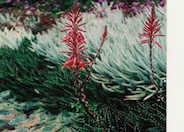
Common name:Gold Tooth Aloe
Botanical name:Aloe X nobilis
This succulent perennial will only grow 1' tall and 1' wide. It has large, sharp, dark green leaves and clusters of red-orange flowers that bloom in summer.
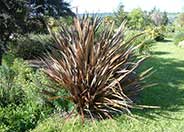
Common name:New Zealand Flax
Botanical name:Phormium tenax 'Atropurpureum'
Phormium tenax 'Atropurpureum' is an evergreen perennial. Big, dramatic plant composed of many swordlike, stiffly vertical leaves (9 ft. long, to 5 in. wide) in a fan pattern. Leaves are purple red. Flowers stems reach high above leaves, bearing clusters of 1-2 in. blossoms in dark red to yellow.
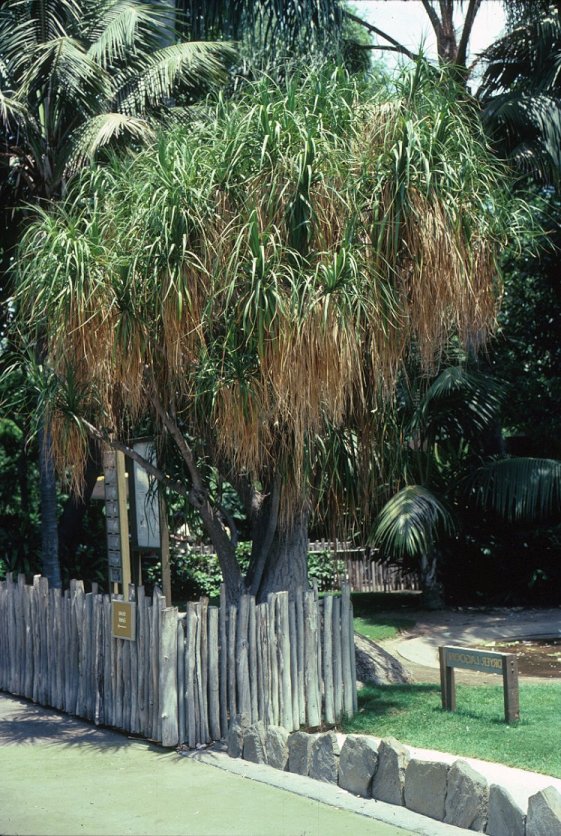
Common name:Pony Tail or Bottle Palm, Beaucarne
Botanical name:Nolina recurvata
This palm-like shrub from the Agave family has a single trunk and grows up to 30' tall. It has thin flat leaves that can grow up to 6' long and only 1" wide. The base is large and distinctive; it usually looks swollen. Mature plants may bloom on a 3'-4' tall stalk.
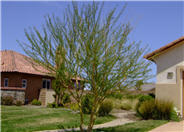
Common name:Mexican Palo Verde, Jerusalem Thorn
Botanical name:Parkinsonia aculeata
Light, airy tree with prickly stems and green bark. Very fast growing with sparse foliage & very long narrow leaves. Yellow flowers with orange red throats spring for at least a month. This is a messy and shortlived palo verdy. Usually found on limestone soils in areas with moisture but is strongly drought tolerant. Withstands saline conditions. Can be cold or drought deciduous.
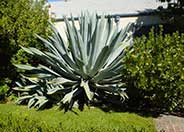
Common name:Century Plant, Maguey
Botanical name:Agave americana
This plant is fast growing to about 6'-10' tall and 8'-13' wide. Wide gray leaves have stiff terminal spines and recurved teeth on margins. It prefers full sun and well-drained situations. After blooming, which could take several years, it will die but will send up new pups from around the base. Some people are allergic to the sap. Removal is difficult if unwanted.
Designer: Greg Hebert Landscape Arch.
Photographer: GardenSoft
Physical weed control, including mulching, or hand removal protects the watershed from harmful chemicals.
Apply a layer of mulch around plants to reduce moisture loss.
Choose organic mulches, such as shredded bark, compost or aged sawdust.
Remove irrigation water and fertilizer from areas where you don't want weeds to grow.